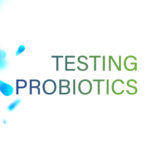In recent years, the FDA and other governing bodies have been tightening regulations for dietary supplement companies. Seen in the recent attacks by the NY attorney general and other agencies, they have criticized companies for mislabeling ingredients. It was unfortunate for the companies on the receiving end of these attacks because the agencies used non-traditional testing methods, which have not been proven to be effective at identifying the purity of raw ingredients. As a result, these companies faced loss of consumer trust in their products and it undoubtedly affected their bottom line. So how can you protect your company from events like this? Testing your raw ingredients is the best way to address this concern!
According to 21 CFR 111.120, companies are required to determine whether all components, packaging, and labels conform to specifications that are established in 21 CFR 111.70 (b) and (d). These specifications are provided for each component (raw ingredient) that is used and must be established as follows:
(b)
- You must establish an identity specification.
- You must establish component specifications that are necessary to ensure that specifications for the purity, strength and composition of the dietary supplements manufactured using the components are met.
- You must establish limits on those types of contamination that may adulterate or may lead to adulteration of the finished batch of the dietary supplement to ensure the quality of the dietary supplement.
(d)
You must establish specifications for dietary supplement labels (label specifications) and for packaging that may come in contact with dietary supplements (packaging specifications). Packaging that may come into contact with dietary supplements must be safe and suitable for its intended use and must not be reactive or absorptive or otherwise affect the safety or quality of the dietary supplement.
If you pay close attention to (b) you can see how the testing of your raw ingredients is mandatory. The minimum requirement is for ID, purity and strength to ensure your raw ingredients are what you are claiming. This documentation is also very important when you test your finished product and notice matrix interference occurring after testing has been completed. Matrix interference can cause certain analytes to be much higher or much lower than your anticipated label claim. When you have documentation of the quality of your raw ingredients, it allows for a written documentation detailing the unexpected results for reference if your product is ever under scrutiny.









